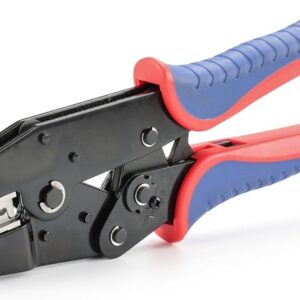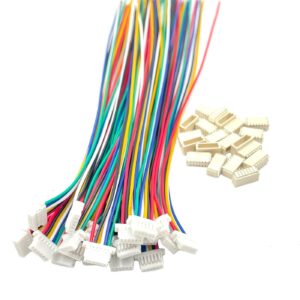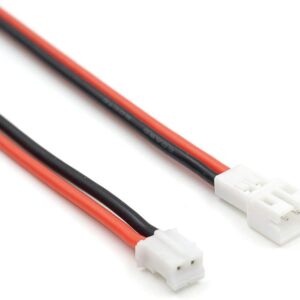$9.90
In electronic engineering and DIY projects, selecting the right connector plays a crucial role in ensuring successful designs. Due to its compact design and excellent electrical performance, the 16-pin JST connector finds widespread use across multiple industries. This article explores the specifications, features, applications, and selection guidelines of the 16-pin JST connector, helping you gain a deeper understanding of this essential component.
Specifications
Key specifications of the 16-pin JST connector significantly impact its performance. These typically include the number of pins, voltage, and current ratings. For example, the commonly used ZH series connector offers a 1.5mm pin pitch with a current rating of up to 3A, making it ideal for high-density circuit designs.
| Specification | Description |
|---|---|
| Pin Count | 16 |
| Pin Pitch | 1.5mm |
| Current Rating | 3A |
| Voltage Rating | 250V |
| Material | High-quality plastic, metal |
Design
The 16-pin JST connector features a compact design, which makes it an ideal solution for space-limited applications. This layout not only reduces the overall footprint but also enhances connection reliability. Additionally, the connectors include a locking mechanism on both the plug and socket, ensuring secure connections even in environments prone to vibration or shock.
Materials
Manufacturers use high-quality plastic and metal to ensure durability and reliability in 16-pin JST connectors. For instance, UL94 V-0 rated plastic helps to reduce fire risk, while gold-plated contacts enhance both conductivity and resistance to oxidation.
Consumer Electronics
You can find the 16-pin JST connector in a wide variety of consumer electronics such as smartphones, tablets, and televisions. It plays a vital role in connecting batteries, motherboards, and other components, which helps ensure the smooth operation of these devices.
Robotics and Automation
In robotics and automation equipment, the 16-pin JST connector serves as a key component. It efficiently connects sensors, actuators, and control units, supporting complex mechanical movements and data transmission. As more robotic projects emerge, many developers increasingly choose JST connectors to improve assembly efficiency.
DIY Projects
For electronics enthusiasts and developers, the 16-pin JST connector provides an excellent option for DIY projects. Whether you’re building robots, developing prototypes, or conducting other electronics experiments, these connectors offer stable electrical connections and simplify the wiring process.
Compatibility
When selecting a 16-pin JST connector, it’s essential to ensure compatibility with other components. Check factors like pin pitch, plug shape, and electrical characteristics to guarantee proper functionality in your project.
Electrical Performance
Choosing connectors with the appropriate current and voltage ratings to meet your project’s specific needs is crucial. If your project requires handling high current or voltage, selecting a connector with matching electrical performance will help prevent overload and potential failures.
Mounting Method
The ease of installation also plays a key role when choosing a connector. For example, if your project requires frequent plugging and unplugging, you may want a different mounting solution than one designed for permanent soldering.
The 16-pin JST connector excels in delivering superior performance and flexibility across various applications. Whether you’re an electronic engineer or a DIY enthusiast, understanding its specifications, features, and potential uses ensures better decisions when incorporating it into your designs. Have you used JST connectors in your projects? How did they improve your design process? Feel free to share your experiences and insights!




